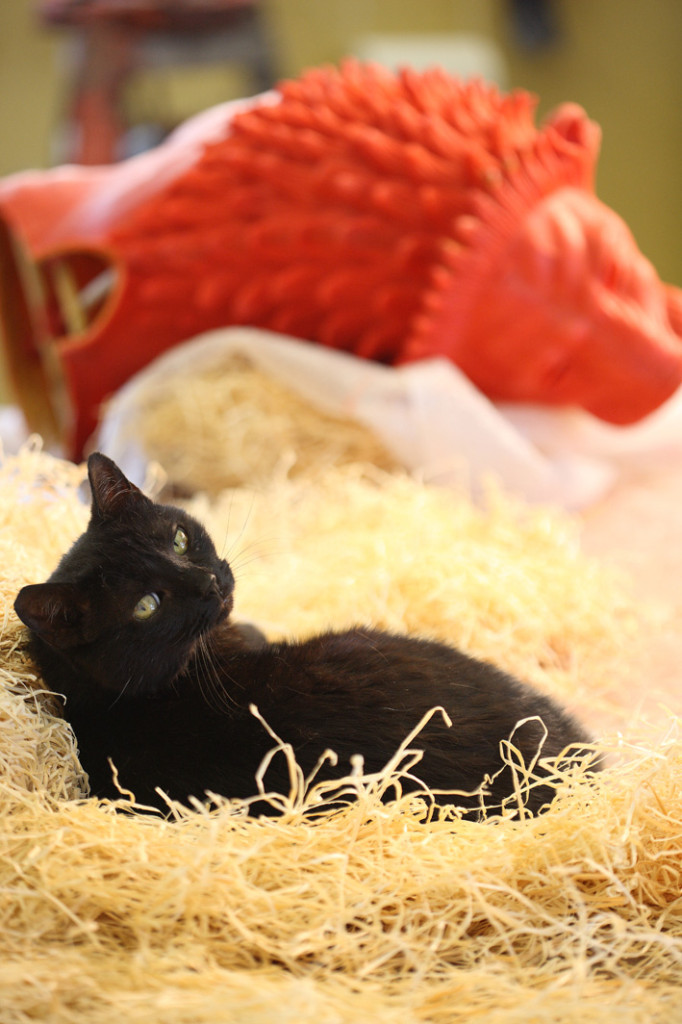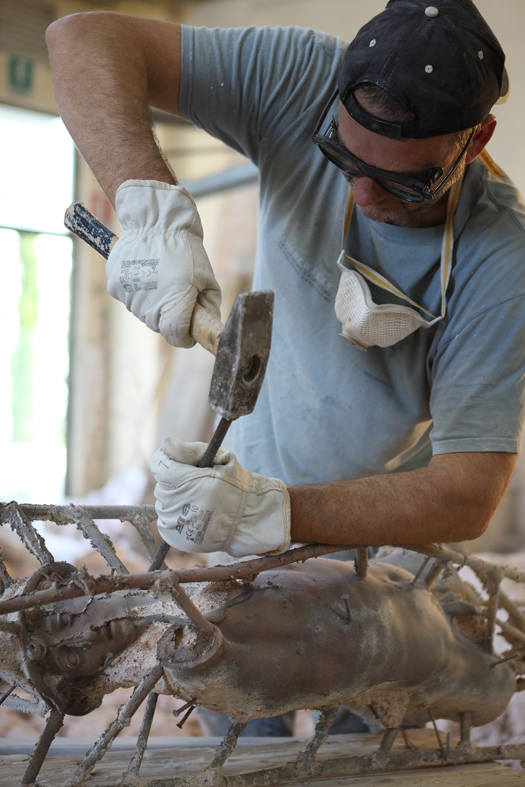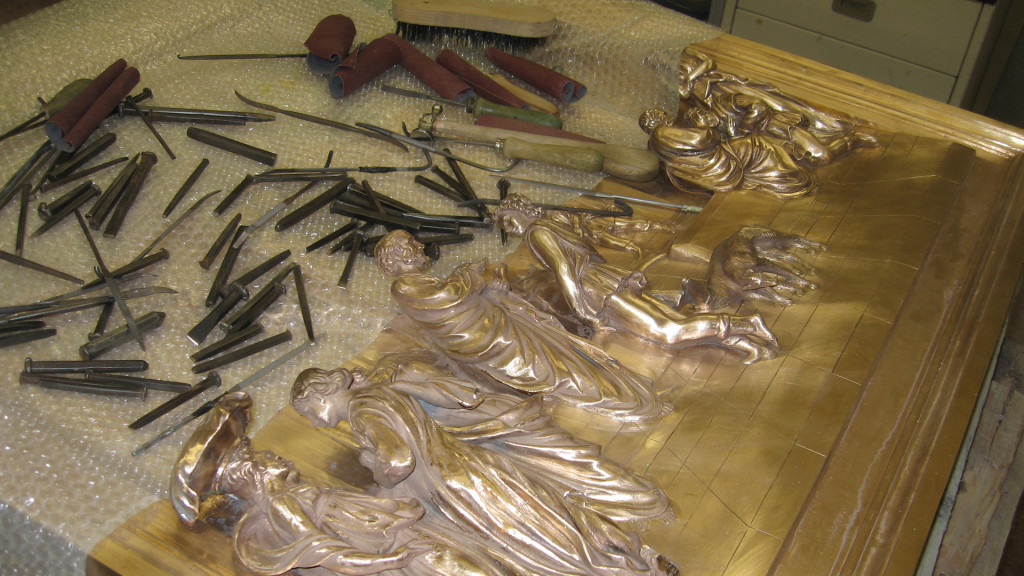In the Foundry
Lost wax - In the Foundry
The lost-wax technique is long and complex: all its phases are manual and require expert and very skilful workers to avoid errors that can compromise the casting.
Briefly, it is necessary to create a wax mould of the work that is then enclosed within two moulds made of refractory material, an internal one, known as “core”, and an external one called “mantel”. At a successive heating, the wax liquefies and burns leaving within the mould an empty casing. In this empty space the liquid bronze is poured. When mantel and core are removed, cleaning, chiselling and patination begin. This too is a strictly manual process that can last months or even years depending on the size of the work.
REALISATION OF THE WAX AND TOUCHING UP
The negative mold is used to obtain a positive copy of the work in empty wax. The author of the work or another artist will retouch it to eliminate any defects or imperfections. A red dye is added to the wax to facilitate the retouching work. Its thickness will determine the thickness of the bronze: it is precisely this wax that will be ‘lost’ and replaced by the molten bronze.
COVERING IN REFRACTORY MATERIAL
Once the “drains” have been placed, the wax is filled inside and covered externally with refractory material, the so-called loto, a blend of ground brick and chalk. Remaining visible are the extremities of the “drains” and the hole into which the liquid bronze is poured.
HEATING OF THE MOULDS
The loto mould that contains the wax sculpture is heated in a furnace. This leads to the melting of the wax and burning of the “drains” thereby creating an empty casing within the mould. Heating and cooling must be gradual to avoid cracks: some ten days are required to heat and cool the moulds.
DE-CASING AND CLEANING
Once cooled, the moulds are lifted out and broken to remove the cast. The “drains” – now filled with bronze – and all loto residues must be removed from the rough bronze at this stage. When large sculptures are involved, casting occurs in separate pieces, which must now be assembled and soldered together.
® 2025Fonderia Artistica Ferdinando Marinelli



























